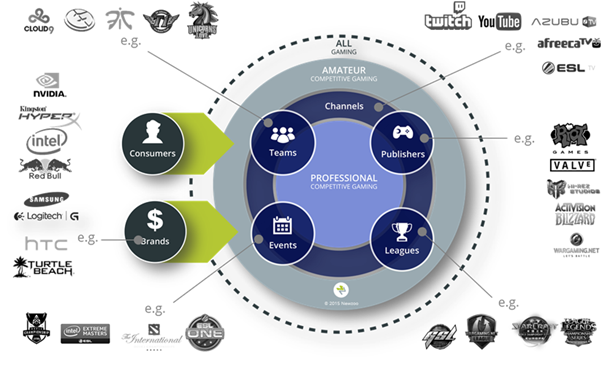A brief account of esports
Most people recognise the names Cristiano Ronaldo, Lionel Messi, and Tom Brady, figures often seen as the faces of their respective sports. Names like Lee “Faker” Sang-Hyeok, Luka “Perkz” Perković, and Kim “Doinb” Tae-sang may not have quite the same recognition yet, but these athletes are also becoming global superstars.
Most people recognise the names Cristiano Ronaldo, Lionel Messi, and Tom Brady, figures often seen as the faces of their respective sports. Names like Lee “Faker” Sang-Hyeok, Luka “Perkz” Perković, and Kim “Doinb” Tae-sang may not have quite the same recognition yet, but these athletes are also becoming global superstars.
Faker, Perkz, and Doinb are all professional players of the world’s most popular computer-based video game: League of Legends. League of Legends is one of many games that host competitions of increasing fanfare and popularity, part of the rapidly expanding genre of electronic sports.
Esports are generally defined as professional or semi-professional competitive gaming in an organised format (tournament or league) with a specific goal/prize, such as winning a championship title or prize money. These games can range from popular, team-oriented multiplayer online battle arenas, to single player first person shooters, to survival battle royales, to virtual reconstructions of physical sports.
In addition, there are amateur competitions or live streaming around non-organised competitive gaming. Live streaming around non-organised competitive gaming is an exciting industry full of its own developments. This is typically described as the live-streaming or game streaming market. Some of these streamers have grown to celebrity status, including Ninja and Shroud.
The lines are between professional and amateur are beginning to blur, owing to the increasing frequency at which esports and live-streaming formats are overlapping. For example, popular streamers are competing in pro-level esports more often, and some tournaments are allowing their competitors to live stream themselves competing.
The best professional esport players earn in excess of US$3million per year and in 2019 the biggest prize pool of US$64 million was for Fortnite.
A short history of esports
Specific dates for when esports truly started could be argued however, there was a game that emerged in the 1960s that was the first to generate competition and tournaments: Spacewar.
In the late 1970’s Atari’s football game became huge, and Atari hosted arguably the first international esports tournament in 1978.
In 1982 Germany Armin Stürmer founded the Atari VCS Bundesliga, essentially a tournament pitting clubs against each other in a variety of games with limited rounds and set rules. It only lasted three years but was a precursor of things to come.
The 1990s brought in a new era. Nintendo organised the Nintendo World Championships in 1990. In 1997 the Red Annihilation tournament which drew around 2,000 entrants and is considered as another vital pin in the evolution of esports timeline. The winner won a Ferrari as the grand prize. Shortly after this, the Cyberathlete Professional League (CPL) was introduced.
As a mainstream spectator sport, esports first took off in South Korea, when cable networks broadcast StarCraft tournaments in the early 2000s. By 2004, StarCraft stadium events in South Korea drew 100,000 fans.
In the US, 13,000 people flooded the Staples Center to watch the world championship final of League of Legends in 2013. Esports had entered the big time supported by new streaming services and better technology.
The League of Legends tournament was only two years after the launch of Twitch, a streaming service which introduced viewers to competitive gaming. By 2013, viewers had accumulated 12 billion minutes of video watching on the platform. League of Legends and Dota 2 were the most popular games on the platform at this point.
The esport ecosystem
There are many different stakeholders for esports, and each of these has a unique part to play. This makes the ecosystem complex and varied. The diagram below shows the stakeholders involved in esports. Generally, consumers view a game via a broadcasting platform. However, game publishers work with many different companies to produce video content. Therefore, there are many ways content is monetised.

Source: NewZoo
Look out for more blogs one each of the stakeholders and the part they play in the esports ecosystem.
READ MORE:
Part 2: The publishers
Part 3: The teams
Part 4: The fans
Published: 01 August 2021




